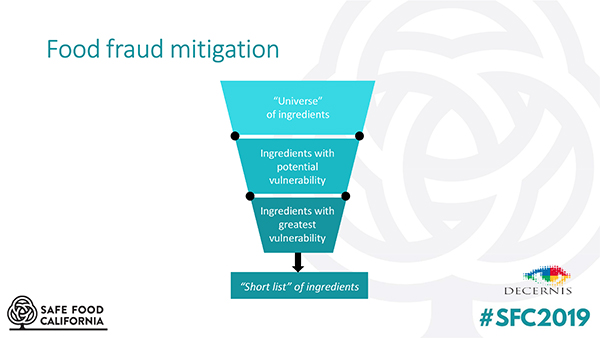Remember the childhood game “Red Rover?” The one where a line of kids lock arms to form an unbreakable connection, then other kids try to run through the arm barrier to break through? With enough time, these runners always eventually break through the tough barrier, and the first to do so is a winner!
Turns out, this childhood game is similar to a much less enjoyable occurrence: Pests invading your facility. You’ve taken the time to implement an integrated pest management (IPM) program to form a robust barrier around the outside of your facility. And yet, pests will inevitably find a way in if they’re allowed the same circumstances over time.
That’s because pests are clever, resilient and persistent. It isn’t a matter of “if” pests will try to find a way into your facility, it’s a matter of “when” they’ll find a way in. When they do find a way inside, these pests need to be removed quickly or they can create significant contamination problems for your product.
All pests carry some risk if they get into your facility. Some may simply pose contamination issues while others are able to spread disease-causing pathogens.
In fact, some of these disease-spreading pests can be quite small, making them more likely to find a way through your facility’s external barriers and contaminate product.
That’s bad news for your business’s bottom line. Imagine the cost of losing an entire shipment to contamination. Or even worse, imagine the impact on your business if a supply chain partner farther down the line received this contaminated product and didn’t notice, allowing it to make it all the way to the consumer! The resulting public outcry could devastate a brand.
So, you must be proactive in your efforts to prevent these contaminators. Two of the most common across the United States—flies and cockroaches—love to live and feed on waste and decaying organic matter, which is rife with disease-inducing pathogens. After flies and cockroaches touch or land on these substances, they pick up microscopic pathogens and then move on in search of other things they need to survive. Those three needs: Food, water and shelter.
Unfortunately, your facility has all three of these needs, meaning any food processing facility is a top target for inquisitive pests. Knowing these pests can cause diseases like typhoid fever, dysentery and cholera makes it even more important to proactively prevent them from coming into contact with your product.
Luckily (or unluckily!), there is a lot of overlap in the types of food sources attractive to both flies and cockroaches. To understand how to prevent these pests from thriving inside your facility, it helps to know what makes them tick.
Why do flies and cockroaches like food processing facilities?
To answer this question, it’s important to look at the biology of these pests. While there are some differences between fly and cockroach species, they’re all attracted to the same general food source: Organic matter.
Fruits, vegetables, meats, grains—you name it, these pests would love to eat it. The presence of these organic foods alone will be enough to draw in flies and cockroaches. But these pests, especially cockroaches, prefer to stay hidden in cracks and crevices when not searching for food.
Cockroaches and flies aren’t picky eaters, so nearly any food is a food source for them. That’s why they can both be found around waste areas, whether that’s the lingering garbage left in the break room trash can or the overflowing dumpster in the back. These locations offer organic materials aplenty, and both flies and cockroaches are going to feel quite comfortable calling these areas home. Some flies are even notoriously able to thrive off the organic material built up in drains!
Once they have found a home in or around the facility, flies and cockroaches alike are going to start reproducing. Both have incredibly high reproduction rates, so a few of these pests can turn into an infestation in no time.
Cockroaches (depending on the species, of course) lay dozens of oothecae over the course of their lifetime, and each of these oothecae—or egg cases—can produce a dozen or more immature cockroaches that can emerge in less than a month. They take a few months to develop but they are feeding that whole time! Flies, on the other hand, have even more daunting reproduction rates. One female housefly is capable of laying up to 150 eggs in a batch, and she’ll produce five or six of these batches over the course of a few days! Within a day after the eggs are laid, maggots will hatch and slowly begin to mature. Within one to two weeks after hatching, these maggots will turn into pupae and then mature into adult houseflies.
It becomes easy to see why flies and cockroaches would love a food processing facility. Simply put, there are plenty of food sources and hiding spots for reproduction to occur. Therefore, careful monitoring procedures and preventive strategies need to be in place and be robust enough.
How can facilities protect themselves from filthy pest pressure?
Roaches and flies are constant scavengers, so any open doors or windows are an invitation for pests to come in. Roaches are also known to squeeze their way through tiny gaps in the exterior of a facility. Loading docks and break rooms are high-risk areas, too, as they’re prime harborage areas with plenty of hiding places and potential food sources. Even clutter like cardboard boxes collecting in a corner can be a perfect home and food source for cockroaches!
When reviewing the food safety plan for potential improvements, look at the proactive sanitation and exclusion tactics and ask yourself if these are effectively preventing pest issues before they become a problem.
Here are a few examples of sanitation and exclusion tactics every facility should be doing to prevent filthy pests like flies and cockroaches:
- Make sanitation a priority with your staff. Make a sanitation schedule with daily, weekly, and monthly tasks. Assign cleaning roles to your employees based on where they work around the facility, and make sure they know what to do if they spot a pest somewhere. A pest sighting log in a centralized location helps. Don’t forget to clean up break rooms and offices.
- Use automatic doors and check door seals. End the “open-door policy” for pests. Any entry point is a risk, so reduce the amount of time and number of access points for pests however you can. Air curtains can also help push pests away from frequently used doors, as they push air out of the facility when doors are opened. As a result, any nearby flying pests are blown away from the facility.
- Seal cracks and crevices. Walk around and inspect the outside (and inside!) of the facility at least quarterly. Using a waterproof caulk or other sealant, cover any gaps or openings you can find. Remember: Some pests only need a few centimeters to squeeze into a building.
- Inspect incoming and outgoing shipments. Vehicles transporting goods can become infested with pests, too. Inspecting shipments not only reduces the chances of pests being brought in by staff unintentionally, but in partnership with supply chain partners it can help you detect the source of an infestation more effectively to get your operations back up and running quicker.
- Store food securely. Make sure products are stored off of the floor and are sealed when possible. In kitchens and other areas where employees store food, use airtight containers and empty trash bins at least daily to avoid food waste becoming a target.
- Don’t forget to look up. Many issues could start on the roof and roof vents, and air-handling units can serve as access points for many pests.
Pest prevention doesn’t have to be hard, but you do have to be organized and, most importantly, proactive. If you take the time to create a strong food safety plan focused on the proactive prevention of pests, you’re going to better protect your business’s bottom line and brand reputation. And, perhaps even better, having a strong plan in place will give you some peace of mind knowing your products are protected from invasive, filthy pest contaminators.


















